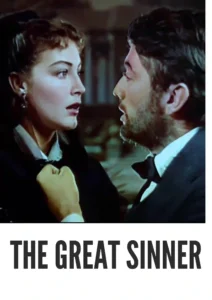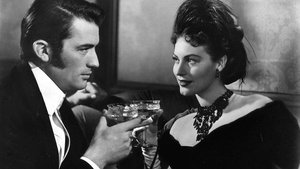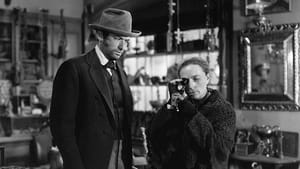Contact: info@alwanfilm.com
Video Sources 0 Views

Synopsis
The Great Sinner 1949 Colorized Review: A Tale of Temptation and Obsession in Classic Noir

Introduction
The Great Sinner (1949), directed by Robert Siodmak, is a film that dives deep into the darker corners of human nature, revealing the moral complexities of obsession, desire, and downfall. Set against the alluring yet ominous backdrop of the European gambling scene, this film noir follows the descent of its protagonist, a writer named Fedja, as he’s drawn into a world of high stakes and addiction. Its stellar cast, including Gregory Peck and Ava Gardner, brings to life an engaging exploration of temptation and human weakness. In this article, we’ll examine how The Great Sinner (1949) serves as an important work within both the film noir genre and the era of post-war cinema, exploring its themes of moral ambiguity, fate, and the seductive power of obsession.
Check The Full Colorized Movies List
Check Our Colorized Movies Trailer Channel
Understanding The Great Sinner 1949 Colorized: Director, Cast, and Genre
Director’s Vision
Renowned director Robert Siodmak helmed The Great Sinner (1949), bringing his experience in noir and thrillers to the film. Siodmak’s direction amplifies the tension and drama of the story, guiding viewers through an exploration of obsession with a style that’s both haunting and suspenseful. Known for his skill in portraying psychologically complex characters, Siodmak uses his expertise to convey Fedja’s internal struggle and moral decay as he falls deeper into the world of gambling. This makes The Great Sinner not only a compelling drama but a deep character study that aligns with the best works of film noir.
The Iconic Performance of Actors
The film stars Gregory Peck as Fedja, a talented writer who becomes ensnared in the world of gambling. Peck’s portrayal of a man tormented by his inner demons is both powerful and haunting, capturing the character’s initial charm and slow unraveling as his addiction takes hold. Opposite Peck is Ava Gardner as Pauline, the captivating yet complex love interest. Gardner’s portrayal adds a nuanced layer to the film, making her character both alluring and tragic, emblematic of the femme fatale archetype found in film noir.
Walter Huston and Ethel Barrymore also appear in supporting roles, adding gravitas to the cast. Huston plays Aristide, an enigmatic gambler who serves as a mentor and antagonist to Fedja, while Barrymore’s performance as Fedja’s mother offers a glimpse into the family pressures that influence his decisions. Together, the cast delivers a strong ensemble performance, adding depth to the film’s exploration of vice and ruin.
Exploring the Genre
The Great Sinner (1949) is firmly rooted in the film noir genre, a style that emerged in the 1940s and is known for its themes of moral ambiguity, psychological complexity, and dark visual aesthetics. The film noir genre often explores the underbelly of society, featuring flawed protagonists who find themselves trapped in spirals of corruption and crime. In The Great Sinner, these elements are present in the protagonist’s journey through gambling addiction and his encounter with dangerous characters, making it a quintessential example of film noir.
Exploring the World of The Great Sinner 1949 Colorized: Plot and Characters
Detailed Synopsis
The plot of The Great Sinner (1949) follows Fedja (Gregory Peck), a novelist who travels to a European spa town to research the lives of gamblers. There, he encounters Pauline (Ava Gardner), a beautiful and mysterious woman who quickly captures his attention. Pauline’s family is deeply embedded in the gambling scene, and through her, Fedja is introduced to Aristide (Walter Huston), a professional gambler who sees potential in Fedja’s talent for the game.
As Fedja becomes increasingly captivated by Pauline and the thrill of gambling, he finds himself pulled deeper into a dangerous addiction. Key moments in the film showcase his transformation from a composed writer to a man consumed by compulsion, losing himself and his moral compass along the way. Fedja’s journey is both a cautionary tale and a tragedy, highlighting the destructive allure of gambling and the cost of unchecked desire.
Complex Protagonist and Supporting Characters
The Great Sinner is filled with characters that embody the dualities of human nature. Fedja’s character is complex, torn between his ambition, love for Pauline, and the overpowering lure of gambling. Pauline, played by Gardner, is herself an enigmatic character, embodying the femme fatale trope with an added sense of vulnerability and emotional depth. Meanwhile, Aristide’s character represents the embodiment of temptation, acting as both mentor and destroyer, guiding Fedja into a world from which he cannot escape.
The supporting characters, including Ethel Barrymore as Fedja’s mother, add layers to the story, each bringing their own motivations and secrets. Barrymore’s portrayal highlights the familial pressures that contribute to Fedja’s internal conflict, adding a psychological dimension to his addiction.
The Art of Film Colorization
Understanding the Process
Colorization, while common now, was a groundbreaking process in the early days of cinema. The process of adding color to black-and-white films was labor-intensive and painstaking, requiring skilled artists to hand-paint each frame. Today’s digital colorization methods have advanced significantly, allowing for more realistic and sophisticated results. This has allowed classics like The Great Sinner (1949) to be re-released in color, creating a new visual experience that preserves the film’s original tone while enhancing its visual appeal.
Development Over Time
The development of colorization technology has significantly altered how audiences perceive classic films. Although black-and-white films have a unique aesthetic, colorization provides modern viewers with a fresh perspective, highlighting details and enhancing the visual experience. For The Great Sinner, the colorized version brings out the rich textures of the period costumes and lavish casino settings, making the scenes even more visually arresting.
Early Colored Films: A Brief History
Emergence of Early Colored Techniques
The earliest attempts at color in cinema date back to the 1900s, with filmmakers using tinting and hand-painting to add splashes of color to individual scenes. However, it wasn’t until the advent of Technicolor in the 1930s that color film became more widely used. This innovation brought vivid colors to the screen, providing filmmakers with a new tool for storytelling. By the 1940s, color had become more accessible, but black-and-white films continued to dominate, especially in genres like film noir, which relied on shadow and contrast for their distinctive look.
The Great Sinner 1949 and Its Early Colored Version
The Decision to Release in Color
The decision to release The Great Sinner (1949) in a colorized version was aimed at drawing in a contemporary audience. The colorized release enhances the film’s opulent casino scenes and adds depth to the actors’ expressions, making it more engaging for modern viewers. The move to colorize the film offers a fresh take on its visual narrative, allowing audiences to appreciate the intricate details of the sets and costumes.
Impact on the Visual Narrative
The addition of color to The Great Sinner (1949) impacts the viewer’s perception of the film’s themes. The bright hues in the casino scenes amplify the allure and seduction of gambling, adding a sensory element to Fedja’s descent. However, colorization also risks altering the film’s original aesthetic. The black-and-white version’s shadows and contrasts are essential to its noir atmosphere, and colorization may shift the tone slightly, affecting the viewer’s experience.
The Debate Over Film Colorization
Controversy Surrounding Colorization
The colorization of classic films has sparked debate among critics and cinephiles. Purists argue that altering black-and-white films undermines the director’s original vision and artistic choices. Others believe that colorization can enhance the film’s appeal, bringing older movies to a new audience. For The Great Sinner, this debate is particularly relevant, as the film’s noir elements are closely tied to its black-and-white aesthetic.
Proponents of Colorization
Supporters of colorization point out that it can help preserve classic films and introduce them to audiences who might otherwise overlook them. For some, colorized versions provide a more immersive experience, highlighting details that might be missed in black-and-white. In the case of The Great Sinner, the colorized version brings a new richness to the sets and costumes, emphasizing the film’s setting and enhancing its visual impact.
Examining The Great Sinner 1949 as an Early Colored Film
Enhancement or Distraction?
Colorization can be a double-edged sword, as it enhances the visual elements of a film but can also distract from the director’s intended atmosphere. In The Great Sinner (1949), the colorized version accentuates the allure of the gambling scenes, making them more visually striking. However, some may feel that the colorized version detracts from the film’s noir qualities, altering the mood and tone established by Siodmak’s original vision.
Influence and Legacy: The Great Sinner 1949 Colorized’s Impact on Cinema
Influence on the Noir Genre
The Great Sinner (1949) is a notable entry in the film noir genre, serving as an exploration of vice, temptation, and moral downfall. Its themes of addiction and human weakness have influenced subsequent films, particularly in the thriller and noir genres. The film’s portrayal of gambling as a seductive yet destructive force has inspired similar stories, cementing its legacy as a cautionary tale.
Lasting Impact on Storytelling in Cinema
The themes explored in The Great Sinner (1949) continue to resonate, influencing both classic and modern films. Its exploration of psychological complexity, moral ambiguity, and the lure of vice has inspired countless stories, reinforcing its place in cinematic history as a work that delves into the darker aspects of human nature.
Conclusion
The Great Sinner (1949) remains a classic film noir that captures the intricacies of temptation, obsession, and moral decay. Robert Siodmak’s direction, coupled with strong performances from Gregory Peck and Ava Gardner, brings to life a story that continues to captivate audiences. The colorized version offers a unique perspective, allowing contemporary viewers to experience the film in a new light. Whether viewed in its original black-and-white form or the updated colorized version, The Great Sinner endures as a powerful exploration of human nature, addiction, and the high cost of desire.












